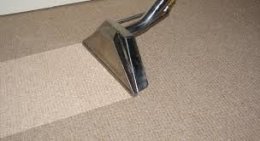
Carpet Cleaning business Profits
 A very common small business in the is the carpet cleaner. Many owners of such businesses desire to know the margins and of course the associated operating expenses involved. This article addresses these two questions and I’ll provide some insight into operations and finish up explaining the corresponding business dynamics.
A very common small business in the is the carpet cleaner. Many owners of such businesses desire to know the margins and of course the associated operating expenses involved. This article addresses these two questions and I’ll provide some insight into operations and finish up explaining the corresponding business dynamics.
Before we begin, you need to understand that this article is rather long and designed to educate and inform those in this industry and anyone desiring to get into carpet cleaning. If you are looking for a quick answer to your question; this isn’t the article for you. Business has no quick solutions to problems.
This particular service based industry is relatively easy to get into, but very difficult to generate significant profits. The primary issue with profitability is competition. There are so many carpet cleaners and so much market that the best key to success is repeating customers i.e. ‘LOYALTY’. In general there is regular ongoing work but from early November to early December, the volume of work increases about 15%. This is primarily due to so many folks preparing for guests for the holiday season.
Although there is plenty of work and margins are generally in the 60% range, gaining market share is the principal barrier to success. I’ll discuss breaking down this barrier in another article, for now; let’s get involved in why the margins are so good.
Margins in Carpet Cleaning
In general, if your margins are greater than 50% then your industry is considered in the high margin business. So yes, carpet cleaning qualifies as a member of this group. The problem is that margin is a dollar value ratio and in carpet cleaning, each job is relatively low price. I mean let’s be realistic here; you will rarely get a job that is billable for more than $250. They will happen, but it will be rare.
Your average billable job is between $140 and $210 depending on the nature of your cleaning and extraction business. Given this, then your margins from each job will approximate $70 to $120. So how are the margins determined? To explain this you must first understand the business meaning of .
is the value of the sale that is used to offset general operating expenses and contribute profit to the business. It is commonly stated as a ratio or percentage of the sales figure. Simply illustrated, take a look at this simple upper section of the profit and loss statement:
Sales $137
Costs 54
Gross Margin $83
As shown, the margin is 60.6%. This is better than average percentage for carpet cleaning. In general, carpet cleaners range between 53 and 63% of sales as the margin.
So now that you understand how to calculate your margin, you need to understand the definition of the costs associated with carpet cleaning. As an accountant, I have had the privilege of serving seven different carpet cleaning companies, from a one van operation to a fleet of 17 vans. I reviewed their financials and the average margin was a tad less than 55%.









